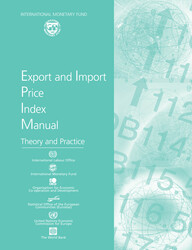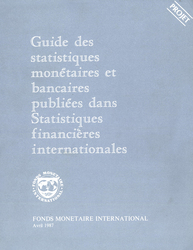
Handbook on Securities Statistics
Publication date: June 2015
ISBN: 9781498388313
$30.00
Add to Cart by clicking price of the language and format you'd like to purchase
Available Languages and Formats
| English |
Topics covered in this book
This title contains information about the following subjects.
Click on a subject if you would like to see other titles with the same subjects.
Finance , Investments and Securities-General , Money and Monetary Policy , M&G , certificate , equity securities , debt securities , securities statistics , nonfinancial corporation , SBS database , Securities , Stocks , Business enterprises , Currencies , Global , debt securities holding
Summary
The production of the Handbook on Securities Statistics (the Handbook) is a joint undertaking by the Bank for International Settlements (BIS), the European Central Bank (ECB) and the International Monetary Fund (IMF). They have specific interests and expertise in the area of securities statistics and are the core members of the Working Group on Securities Databases (WGSD). In 2007, the WGSD—originally established by the IMF in 1999—was reconvened in response to various international initiatives and recommendations to improve information on securities markets. The WGSD is chaired by the ECB and includes the BIS, the IMF and the World Bank. Selected experts from national central banks, who participated actively in the various international groups that identified the need to improve data on securities markets, were also invited to contribute to some of the WGSD’s deliberations. In mid-2008, the WGSD agreed to sponsor the development of a handbook on securities statistics. In November 2009, the report entitled “The Financial Crisis and Information Gaps”, which was prepared by the Financial Stability Board (FSB) Secretariat and IMF staff at the request of the Group of Twenty (G-20) finance ministers and central bank governors, endorsed the development of the Handbook, as well as the gradual implementation of improved statistics on issuance and holdings of securities at the national and international level. The BIS’s compilation of data on debt securities plays an important role in this respect. The Handbook sponsors responded to the demand from various international groups for the development of methodological standards for securities statistics and released the Handbook in three parts. Part 1 on debt securities issues was published in May 2009, and Part 2 on debt securities holdings in September 2010. Part 3 of the Handbook on equity securities statistics was published in November 2012. The methodology described in all three parts was based on the System of National Accounts 2008 (2008 SNA) and the sixth edition of the Balance of Payments and International Investment Position Manual (BPM6). The three parts also went slightly beyond the confines of these standards by providing guidance and additional information on, for example, the main features of securities, special and borderline cases, and breakdowns of issues and holdings of securities by counterparty. Special attention was also paid to specific operations such as mergers and acquisitions, restructuring, privatization and nationalization, and transactions between general government and public corporations. From the beginning, the intention was to combine the three parts into one volume, thereby eliminating any overlap and repetitions between the parts. The Handbook’s conceptual framework is complemented by a set of tables for presenting securities data both at an aggregated level and broken down by various features. This should allow sufficient flexibility in the presentation of data on issuance and holdings of securities, in line with developments in securities markets and financing. The Handbook is the first publication of its kind to focus exclusively on securities statistics. Recent turmoil in global financial markets has confirmed the importance of timely, relevant, coherent, and internationally comparable data on securities, from the perspective of monetary policy, fiscal policy, and financial stability analysis. This Handbook provides a conceptual framework for the compilation and presentation of statistics on different types.
Copyright © 2010 - 2024
Powered by:
AIDC



